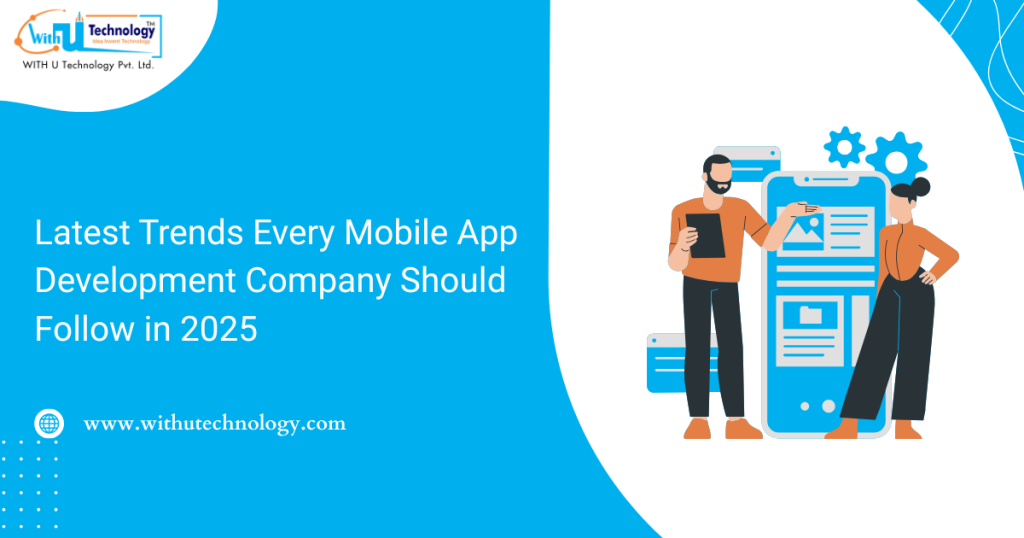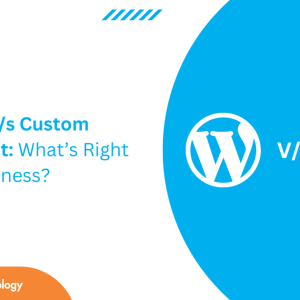The mobile app industry is evolving quickly. Thanks to new technologies and higher user expectations, every app developer must stay abreast of trends to stay ahead of the competition in 2025 and beyond. Fast, intelligent, engaging user experiences should no longer be seen as luxurious indulgences but as essential necessities.
In this blog post, we will review the trends every mobile app development company should follow to remain competitive and deliver exceptional products that align with both business goals and user needs.
5 G-Powered Experiences
2025 marks a major step forward in the global rollout of 5G connectivity. This ultra-fast network allows mobile apps to process large volumes of data with minimal latency, opening up exciting possibilities in AR/VR, real-time gaming, HD video streaming and Iot integration.
What it means for developers:
Design data-intensive apps with the knowledge that users have access to high-speed networks.
Optimise app performance to capitalise on 5G capabilities such as faster download speeds and near-instant buffering times.
Focus on real-time interactivity when designing healthcare, entertainment, or e-commerce applications.
AI and Machine Learning Integration
AI remains at the forefront of mobile app innovation in 2025, becoming more accessible and powerful than ever. From personalisation to predictive analytics and smart assistants, AI is revolutionising user experiences on mobile.
Use Case: AI chatbots and virtual assistants are used for customer service.
Predictive search and content recommendations.
Face and voice recognition for secure logins
Real-time translation and language detection technologies
Attentive app development companies should prioritise using AI features as part of their product to stay ahead of the competition and offer additional value to their users. A few essential AI-powered features for mobile app development companies are TensorFlow Lite, Core ML for ios devices, Chatgpt APIS, and the ML Kit by Google.
Cross-Platform App Development
As time-to-market and budget constraints remain an obstacle for businesses, cross-platform development is becoming an increasing trend in 2025. Frameworks like Flutter, React Native, and Xamarin enable developers to build apps for both Android and ios from a single codebase without compromising performance.
Benefits: Faster development, reduced costs, a uniform user interface/user experience, and easier maintenance and updates are some of the many advantages to be gained from outsourcing development work.
Flutter, in particular, has seen considerable adoption due to its speed and highly customisable user interface (UI). App development companies now accept cross-platform frameworks as standard practice.
AR & VR Integration
Augmented and Virtual Reality (AR/VR) technology has rapidly spread beyond gaming to become an integral component of businesses in 2025, offering increased user experiences across industries like:
Retail (virtual try-ons) and real estate (virtual tours) applications.
Healthcare (surgical simulations)
Education (immersive learning experiences):
Development tools to watch:
ARKit (Apple)
ARCore (Google)
Unity and Unreal Engine
Mobile app development companies should consider AR/VR support in their services, especially for industries looking to add immersive, interactive features to their apps.
Super Apps: The All-in-One Solution
Inspired by Asian platforms like WeChat, super app usage has seen exponential growth worldwide in 2025. These multifunctional applications integrate messaging, shopping, payments, ride booking, and more into one seamless user experience.
Example super app features include: Digital wallets, food delivery services and social feeds as well as mini applications for third-party services.
Building super apps requires intensive design and development work, but the payoff in terms of user retention and revenue potential can be enormous. Mobile app development companies should prepare themselves to support multifunctional, scalable architectures.
Progressive Web Apps (PWAS)
Progressive Web Apps (PWAS) provide an intermediate option between websites and mobile apps. PWAS feature native app-like performance while being delivered through a browser–making them faster, lighter, and more accessible than their counterparts.
Benefits: No installation necessary, and it works offline and in poor network conditions
PWAS offer businesses targeting wide audiences without the complexity of app store deployment an affordable and user-friendly alternative. Development companies should include PWAS as part of their mobile strategies.
Enhanced App Security
Cybersecurity remains an imperative in 2025. Users store sensitive data via mobile applications (banking, healthcare), making any security flaw irreparable damage to their reputation. Regulations such as GDPR and India’s DPDP Act also mandate compliance.
Key security trends for 2019 include biometric authentication (finger/face).
Secure APIS and payment gateways need end-to-end encryption for added protection, according to experts.
Zero-trust security frameworks
Mobile app developers must employ secure design practices in their apps, including regular vulnerability assessments and encrypted data storage to protect both user data and brand reputation.
Iot-Connected Mobile Apps
Internet of Things (Iot) devices have become ubiquitous; smart homes, wearable, connected vehicles and industrial machines all rely on mobile apps to control device functionality and monitor their status.
Use cases:
Home automation apps that provide lighting, HVAC and security are increasingly popular.
Health monitoring using wearable devices
Track your supply chain via Iot with ease
Apps to track fleet and asset management
As Iot devices increase in popularity, app developers must design apps capable of handling real-time data streams, providing reliable connectivity, and providing user-friendly control interfaces.
Voice-Enabled App Interfaces
Voice-enabled interfaces are revolutionizing how users engage with mobile apps in 2025. As voice recognition becomes more accurate and natural, incorporating a voice UX experience into your apps increases both accessibility and convenience for end-users.
Where it can be useful:
Smart homes, Fitness and health apps, hands-free shopping and navigation
Search and Command Interfaces
Development companies should explore Natural Language Processing (NLP) and Speech Recognition APIS to build voice-enabled features into their software products.
In-App Payments and Fintech Features
Reliable payments are essential to the success of any app that deals with transactions. By 2025, users expect fast, secure, and frictionless payment experiences.
Emerging Payment Trends: One-click checkout, QR code payments, digital wallets and crypto assets
Subscription-based billing models
Mobile app development companies must integrate secure payment gateways (such as Stripe, Razorpay, or Apple Pay ) and develop user-centric fintech features, including spending trackers, invoice generation, or cashback systems.
App Clips (ios) and Instant Apps (Android) allow users to experience part of an application without downloading it completely, providing light experiences like App Clips for Apple and Instant Apps on Android that provide lightweight experiences in 2025. These lightweight experiences are increasingly being utilised:
Parking payments, restaurant menu browsing, product previews and instant gaming are features that reduce user friction and boost conversion. Mobile app developers should create apps with modular architecture to enable instantaneous access to core functions.
Personalization Powered by Data
Data-driven personalisation will become essential to increasing engagement and retention in 2025. Apps that learn user behaviours and tailor experiences accordingly provide greater value.
Stay informed with personalised news feeds and targeted product suggestions by subscribing to this service.
Adaptive learning modules in educational technology apps
Mobile app development companies must integrate analytics tools, AI engines and privacy-compliant data collection practices in order to provide highly customised app experiences.
Conclusion
The industry in 2025 is defined by speed, intelligence, user-centric design, and technological integration. Staying ahead means not only understanding these trends but also implementing them in your workflows, strategies, and client projects.
Whether you’re building the next killer e-commerce app, a smart Iot controller, or a global learning platform, the future is in your hands—and your code.







